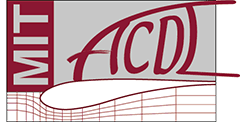"Transport map-based Bayesian optimal experimental design"
Fengyi Li
MIT ACDL
Abstract: The Bayesian optimal experimental design is essential in many fields of science and engineering, especially when each experiment is expensive and resources are limited. Given a prior and a design-dependent likelihood function, we would like to choose the design that maximizes the expected information gain (EIG) in the posterior. Efficient and accurate estimation of EIG therefore becomes crucial. We introduce a flexible transport-map based framework that enables fast estimation of EIG by solving only convex optimization problems. This framework is also compatible with implicit models, where one can simulate from the likelihood but the conditional probability density function of the data is unknown. Several estimators naturally appear within our framework---in particular, positively and negatively biased estimators that provide bounds for the true EIG. We explore the bias and variance of our estimators and study the optimal allocation between the training and the evaluation samples given a fixed number of samples. We then demonstrate the performance of our approach using both a linear and a nonlinear example.
and
"Discontinuous Galerkin methods for the Boltzmann equation"
R. Loek Van Heyningen
MIT ACDL
Abstract: This talk will describe a few of the challenges and strategies for numerically solving the Boltzmann equation. The Boltzmann equation is derived from a statistical description of particles streaming and colliding. Its solution depends on space, time, and velocity variables. While capable of modeling a wide range of physical phenomena, including rarefied gases, this equation is difficult to solve with deterministic methods. This is due to a number of compounding issues, including high dimensionality, stiffness, and costly collision terms. Two methods will be discussed, both using discontinuous Galerkin discretizations in physical space. They differ in their handling of the unbounded velocity domain. One uses spectral collocation in the velocity variable, while the other is an example of globally hyperbolic moment methods, adaptive spectral methods with a correction term to guarantee hyperbolicity.

